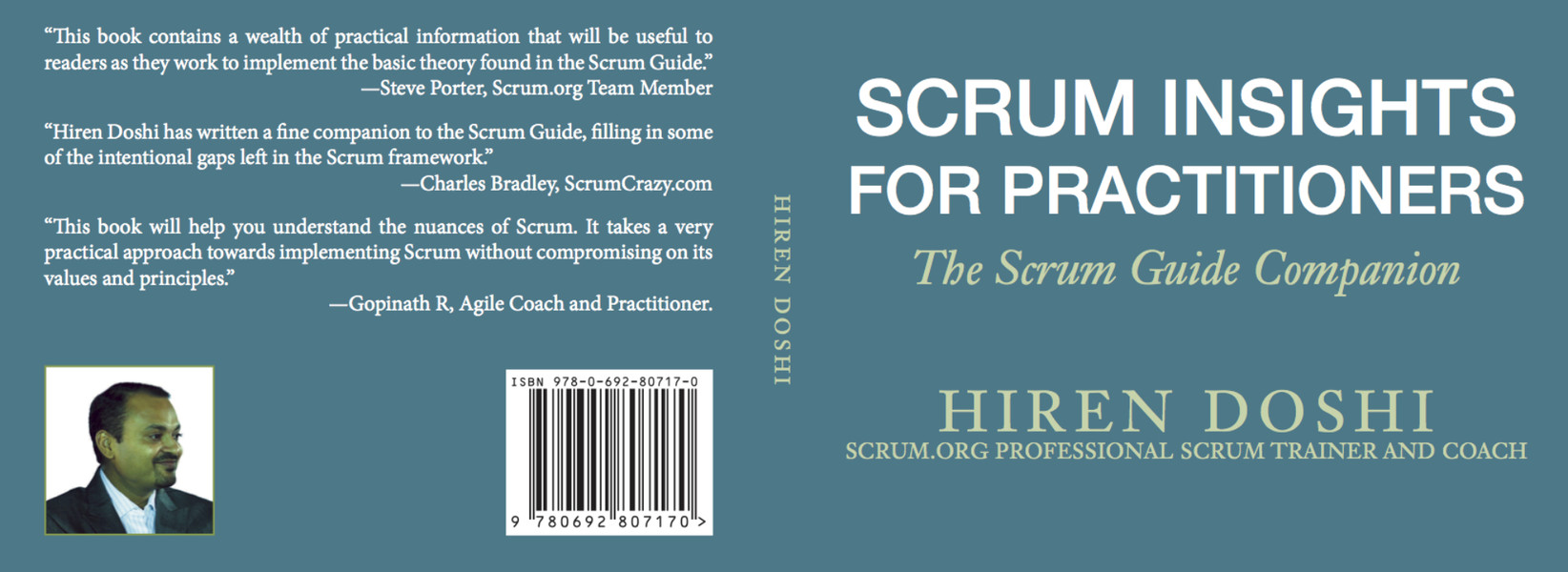This article is a review of “Scrum Insights for Practitioners: The Scrum Guide Companion” by Hiren Doshi.

To me, the Scrum Guide (by Ken Schwaber and Jeff Sutherland) is the gift that keeps on giving. Every once in a while I read the guide all over again and I always get different take-away’s every time I read it. It’s like one of those complex Hieronymus Bosch paintings, albeit a tad less disturbing. The Scrum Guide describes the framework of Scrum and gives the base rules and boundaries. As it is not a methodology, the given prescriptions are minimal, but all of them of them address dysfunctions that are common in product development.
So the ‘vague-ness’ of the Scrum Guide is a feature, not a bug. It provides insight in the foundation of Scrum; the values, the artifacts, the events and the team are well defined. For those getting familiar with Scrum, reading the Scrum Guide can leave some with more questions than answers. Hiren Doshi’s book “Scrum Insights for Practitioners: The Scrum Guide Companion” does exactly what it says: it acts as a companion to the Scrum Guide.
With its 86 pages it’s a neat little book. I finished it in one go, on a sunny afternoon. The book clarifies a lot of misconceptions and misunderstandings one might have after reading the Scrum Guide. You can notice that the author, Hiren Doshi, has an extensive work experience in Scrum and product development. His experience really shines through with an abundance of practical information. The book doses the information in a very logical way, the information is neatly divided in the different chapters. Doshi’s experience as a trainer also shines through, as he explains concepts very clearly, without giving an overdose of information.
This book is a very welcome addition to your Scrum reading list, especially if you are preparing for your first and second PSM and PSPO exams. For people with advanced knowledge of Scrum the book does not present readers with world-changing insights. But the manner in which Doshi describes Scrum and its elements, is done in such a refreshing and clear way, that it could help with explain the framework in a more clear way. For example, at the start of the book, Doshi describes Scrum as follows:
“Scrum is an iterative way of developing software in a Sprint (time-box of one month or less), incrementally delivering working software every Sprint, incorporating customer feedback on the working software, and ensuring that the right business value is delivered in each Sprint.”
If you compare that to how the Scrum Guide describes Scrum, the above description is a lot more clear in my opinion. The rest of the book follows the same example and describes all facets in a refreshing way. For this reason I see this book as a welcome guide for everyone interested in Scrum; Scrum Masters, Product Owners, and Developers both novice and intermediate. One of my favorite parts of the book is the chapter on the ‘Myths, Mysteries and Misconceptions’ of Scrum, as it presents certain widespread erroneous views on Scrum that still persist to this very day. The book is good value for money, as I bought the paperback (brand-new) in for about 10 USD/EUR. I think that’s a bargain!
If I had to point out one minor flaw, is that the current/latest edition of this guide is not in tandem with the latest 2020 update of the Scrum Guide. That means that for instance not all terminology is in sync, but if you know what the differences are, you’re good to go!
All in all a great addition to your catalogue of Scrum literature. ⭐⭐⭐⭐⭐
